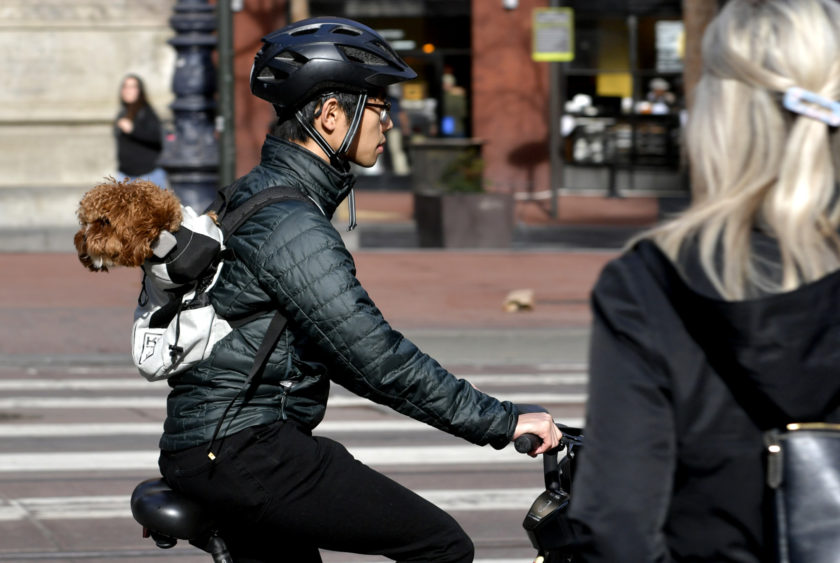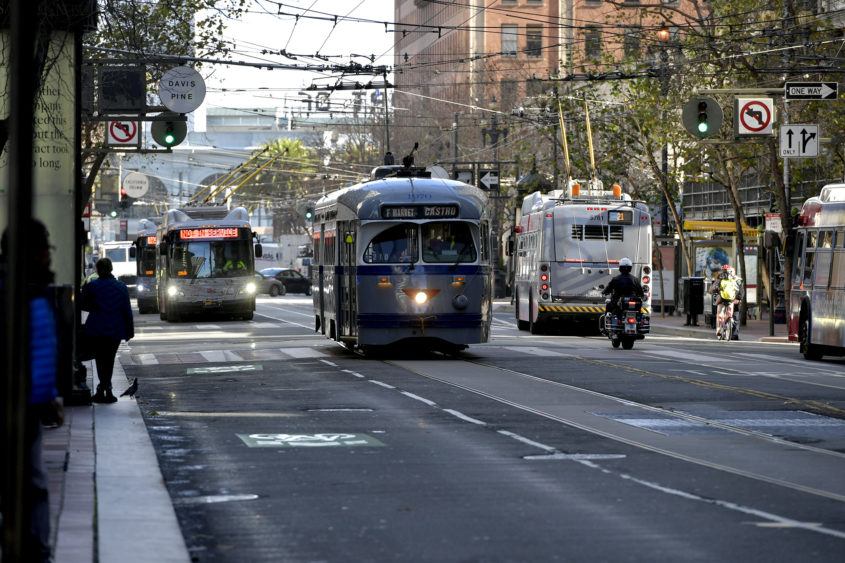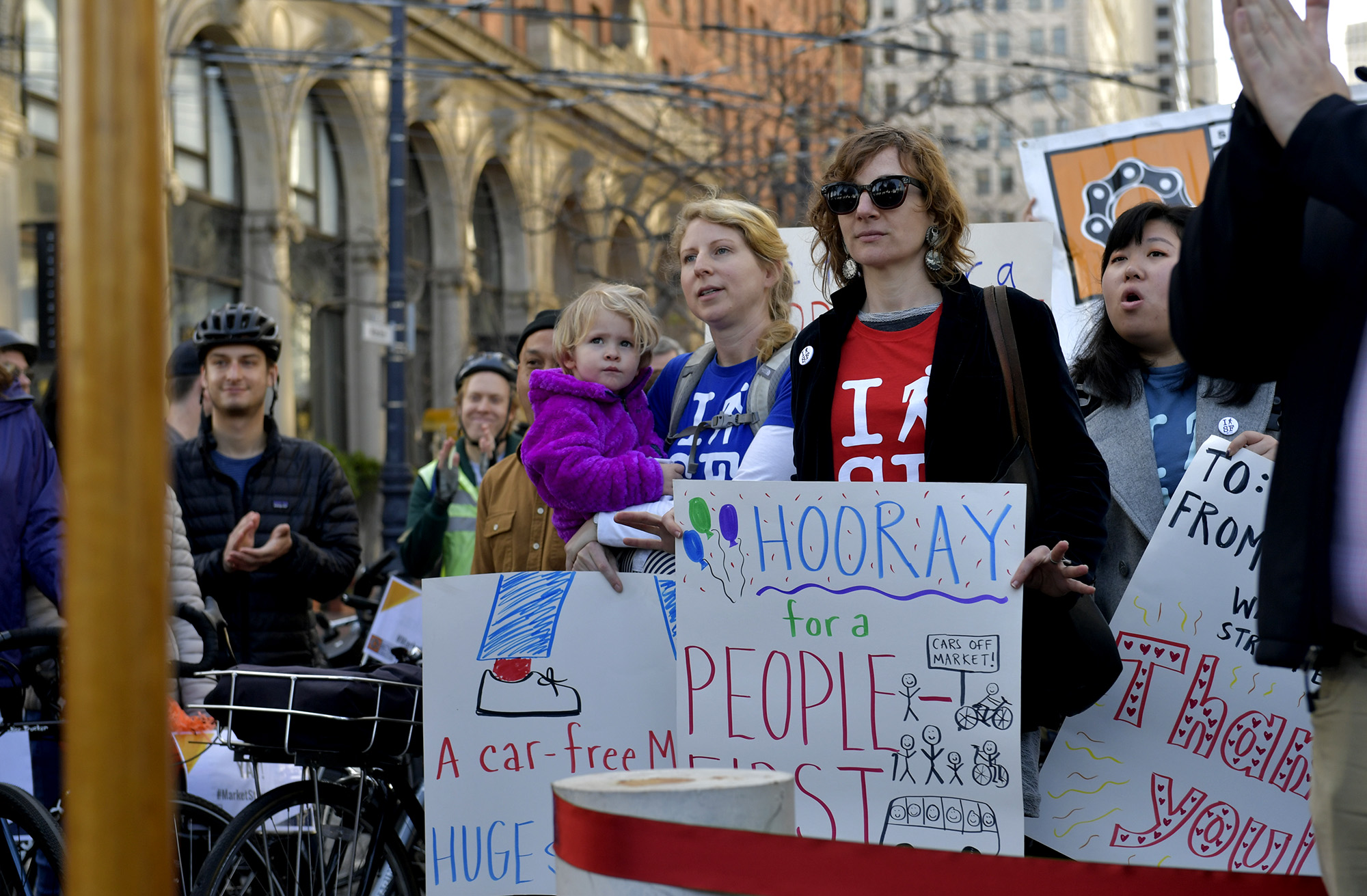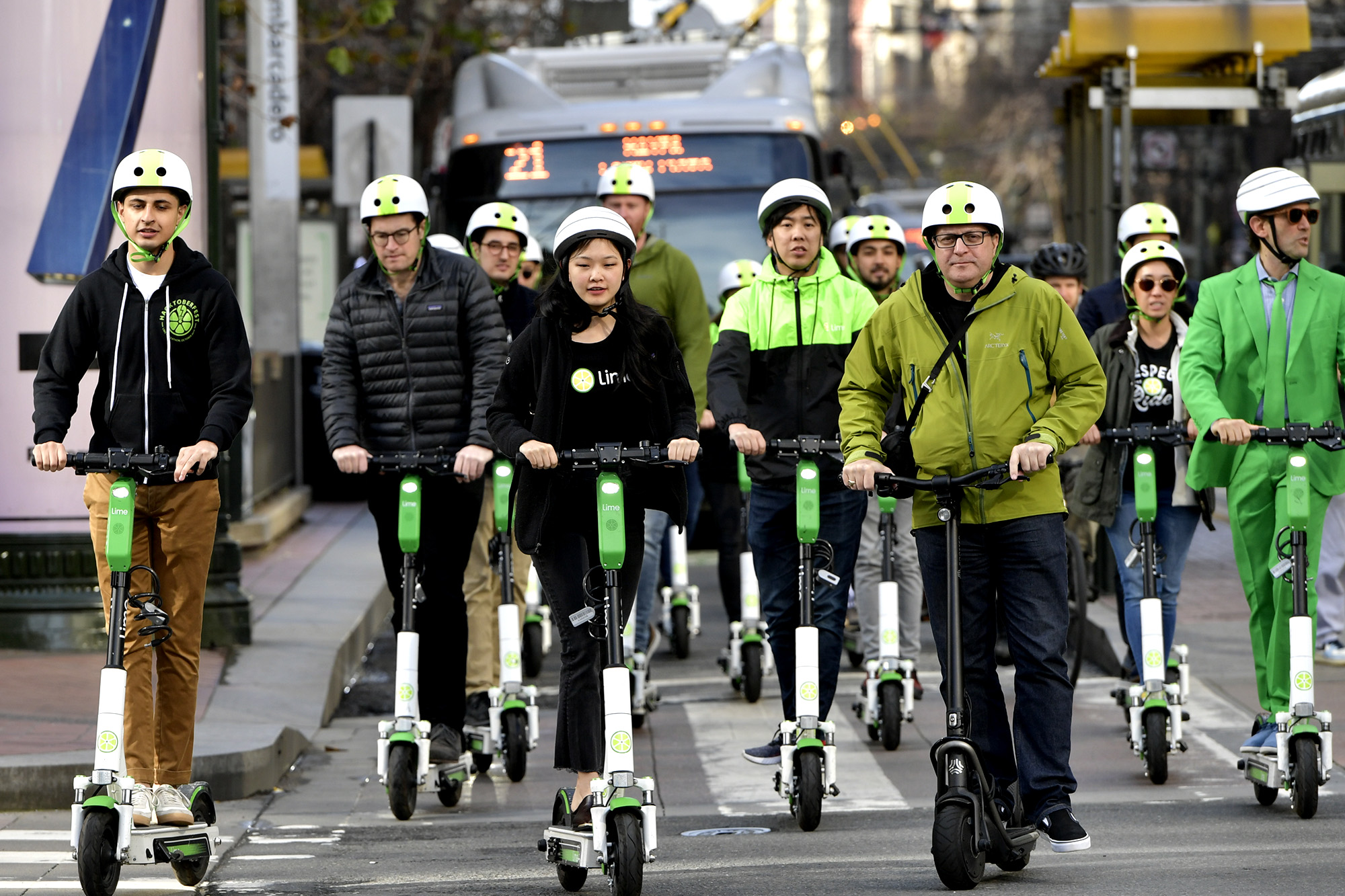A new era has officially begun on one of San Francisco’s busiest corridors, one transit officials say will increase safety for pedestrians and bicyclists, and improve Muni service along Market Street.
Wednesday marked the first day of a car-free Market Street from 10th to Main streets in the westbound direction and from Steuart Street to Van Ness Avenue in the eastbound direction.

City officials held a ceremonial ribbon-cutting to celebrate the occasion at the foot of Market Street in the Embarcadero Plaza.
The only vehicles now allowed in the prohibited area are Muni buses and historic streetcars, commercial vehicles, taxis, paratransit and emergency vehicles.
Parking control officers were out at almost every Market Street intersection Wednesday to direct traffic and stop motorists from making turning where they’re no longer allowed.

The traffic changes come as part of a longer-term, comprehensive Better Market Street plan, but San Francisco Municipal Transportation Agency directors last year approved the car ban and related infrastructure made possible by the agency’s quick-build program.
Mayor London Breed said the plan to close off Market Street to private vehicles has been a long time coming, especially with The City’s growing population and emergence of new mobility devices.
Breed said:
“We know that there has to be something that changes in order to ensure not only the ability for people to get around more efficiently, but to ensure safety.”
The mayor said this is a step toward reaching a goal of zero traffic fatalities by 2024. According to city data, 29 traffic-related fatalities were reported just last year.

The relatively short but heavily traveled Market Street is designated as a high-injury corridor.
Malcolm Heinicke, chair of the SFMTA Board of Directors, said the word “magnificent” was a more appropriate adjective than “better” to describe the corridor’s changes.
Heinicke said:
“It’s going to be magnificent for transit, for pedestrians, for cyclists, for equity, for the environment, for visitors, for businesses.”
The SFMTA estimates that Market Street is a route for more than 500,000 pedestrians and 72,000 Muni passengers every day. The agency said 200 Muni vehicles travel down the corridor per hour.

Heinicke, a regular Muni Metro rider, said the street will become an aboveground subway for Muni bus riders since the traffic changes will enable transit to move through the corridor 15 to 25 percent faster.
Looking forward, Heinicke has tasked transit planners to identify another corridor that can be made car-free. He’s suggested Valencia Street as an option.
Supervisor Matt Haney, who has been a staunch advocate for safer streets in his district, especially in and around the Tenderloin, applauded The City’s Market Street efforts.
Haney said:
“Today marks the beginning of a historic transformation of the main corridor of our city into a safe, inviting place to walk, bike and to take transit.”



Safety advocates have for years been calling to remove vehicles from Market Street and have been working on the Better Market Street plan for more than a decade.
Jodie Medeiros, executive director of Walk San Francisco, called for city officials to keep taking bold steps like they have in Oslo, Norway, where zero traffic-related deaths occurred in 2019.
Medeiros said:
“We invite our city leaders to take more action, bold strides. Valencia Street, JFK, Embarcadero. Let’s think big and bold on where we can put more car-free spaces in our city all the way to Vision Zero.”
The SFMTA said approximately 650 bicyclists ride down Market Street per hour during morning commute. San Francisco Bicycle Coalition’s Brian Wiedenmeier told the crowd at Embarcadero Plaza that it was a beautiful day to ride a bicycle on Market Street.



Wiedenmeier said:
“Today marks the beginning of a historic transformation of the main corridor of our city into a safe inviting place to walk, bike and to take transit.”
Jerold serves as a reporter and San Francisco Bureau Chief for SFBay covering transportation and occasionally City Hall and the Mayor's Office in San Francisco. His work on transportation has been recognized by the San Francisco Press Club. Born and raised in San Francisco, he graduated from San Francisco State University with a degree in journalism. Jerold previously wrote for the San Francisco Public Press, a nonprofit, noncommercial news organization. When not reporting, you can find Jerold taking Muni to check out new places to eat in the city.
